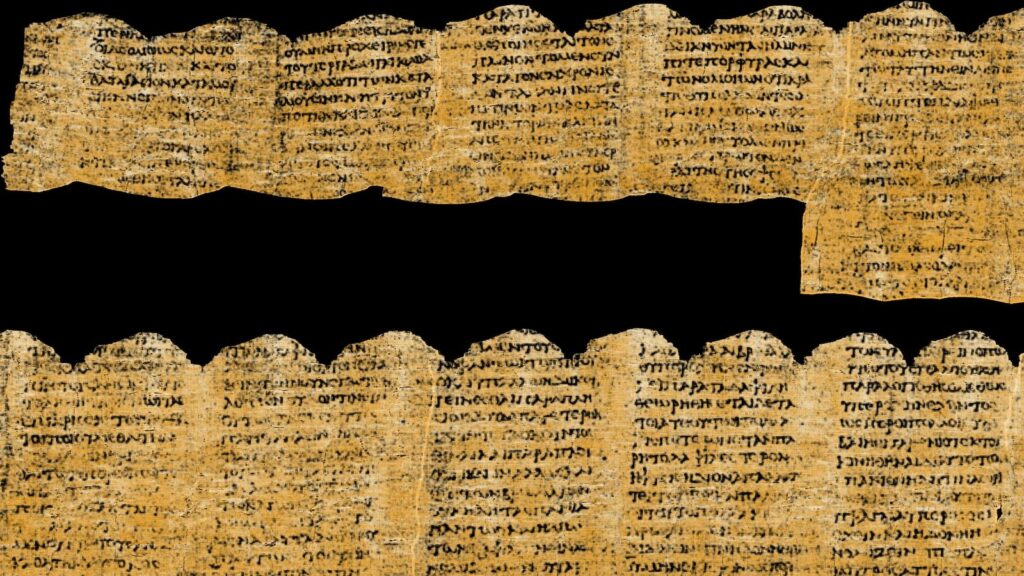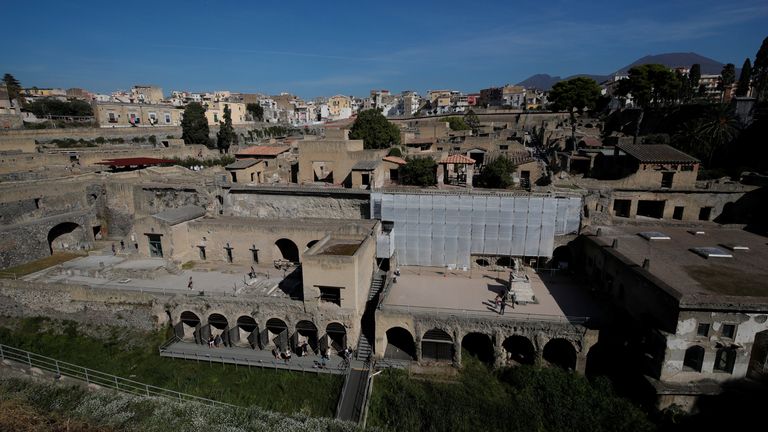Ancient Herculaneum scroll deciphered by students using AI | Science & Tech News

Ancient papyrus scrolls that were buried in ash after the eruption of Mount Vesuvius in 79AD have been read for the first time with the help of artificial intelligence (AI).
The Herculaneum papyri are a collection of around 1,800 scrolls that, along with thousands of other relics, were carbonised during the volcanic eruption.
Located in the town of Herculaneum – near to the city of Pompeii which was also destroyed – more than 800 of the scrolls have been excavated from an ancient Roman villa and are now stored in a library in Naples, with every effort to try and unroll and read them having failed.
That was, until three students managed to read 15 columns in a scroll with the help of coding machines powered by AI.
The breakthrough came as part of the Vesuvius Challenge – a contest which offered a prize pot of $1m (£796,000) to help solve the problem.
Mount Vesuvius. Pic: Reuters/Ciro de Luca
Youssef Nader in Germany, Luke Farritor in the US, and Julian Schilliger in Switzerland, will now share the $700,000 (£557,000) grand prize after reading more than 2,000 letters from the scroll.
“These fifteen columns come from the very end of the first scroll we have been able to read and contain new text from the ancient world that has never been seen before,” Nat Friedman, one of the competition organisers, said on X.
He said it was likely written by Epicurean philosopher Philodemus who wrote about “music, food and how to enjoy life’s pleasures”.

Archaeological site of Herculaneum. Pic: Reuters/Ciro De Luca
Read more technology news:
Facebook and Instagram to label all AI images
Concerns over Tesla drivers using VR headsets
The “virtual unwrapping” of the scroll works by creating a 3D scan of the text using a CT-scan.
The scroll is then separated into segments and inked regions are detected by a machine learning model – an application of AI.
The discovery has wowed scientists and historians, including academic and presenter Professor Alice Roberts, who dubbed it “the archaeological discovery of my lifetime”.
The portion of text deciphered equates to only 5% of one of the scrolls that has already been discovered, Mr Friedman said, with the potential of thousands more scrolls still laying undiscovered in the Villa of the Papyri.
“In 2024, our goal is to read a few passages of text to entire scrolls, and we’re announcing a new $100,000 grand prize for the first team that is able to read at least 90% of all four scrolls that we have scanned,” Mr Friedman wrote on X.

Recent Comments